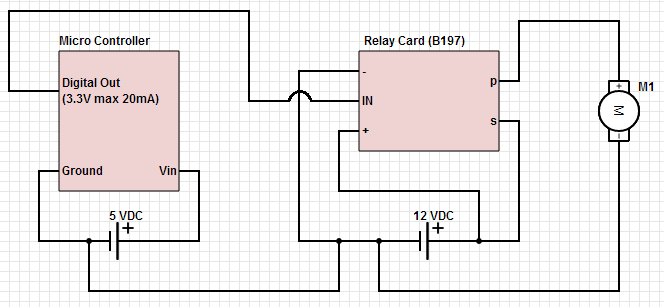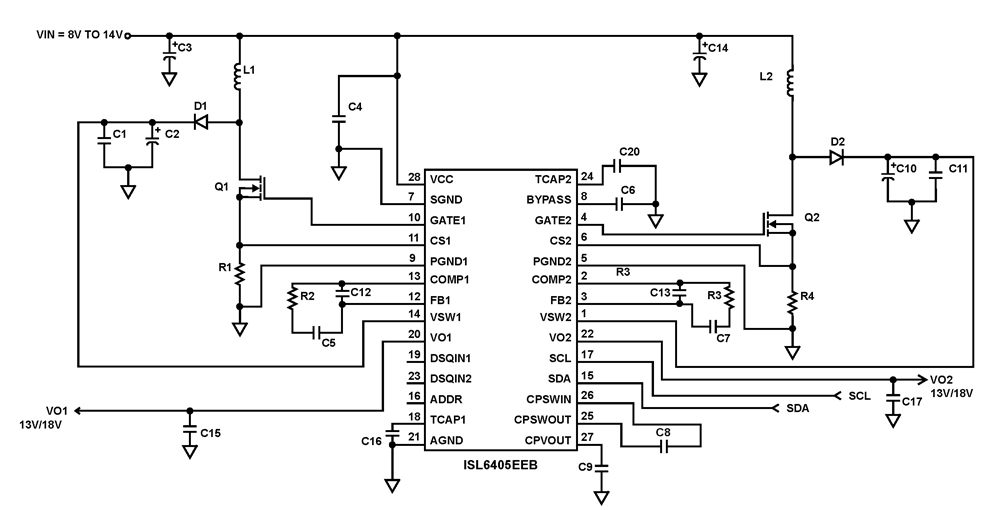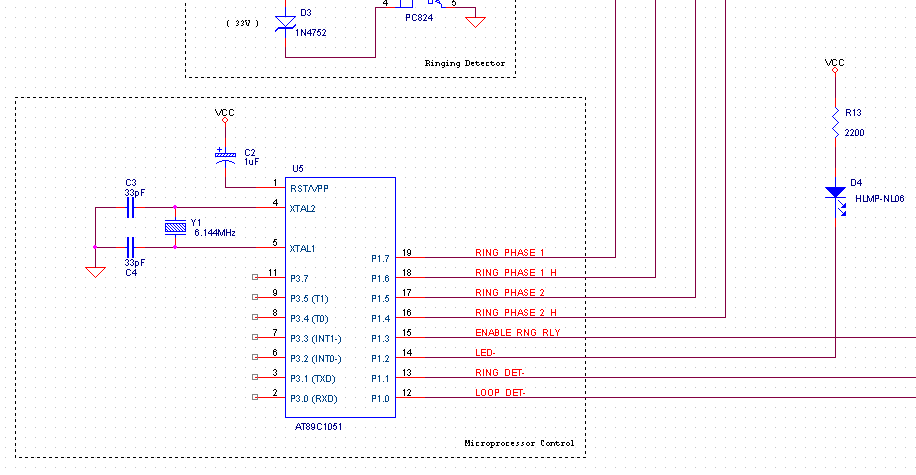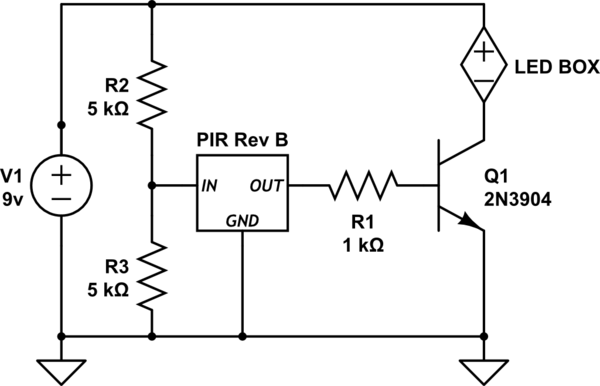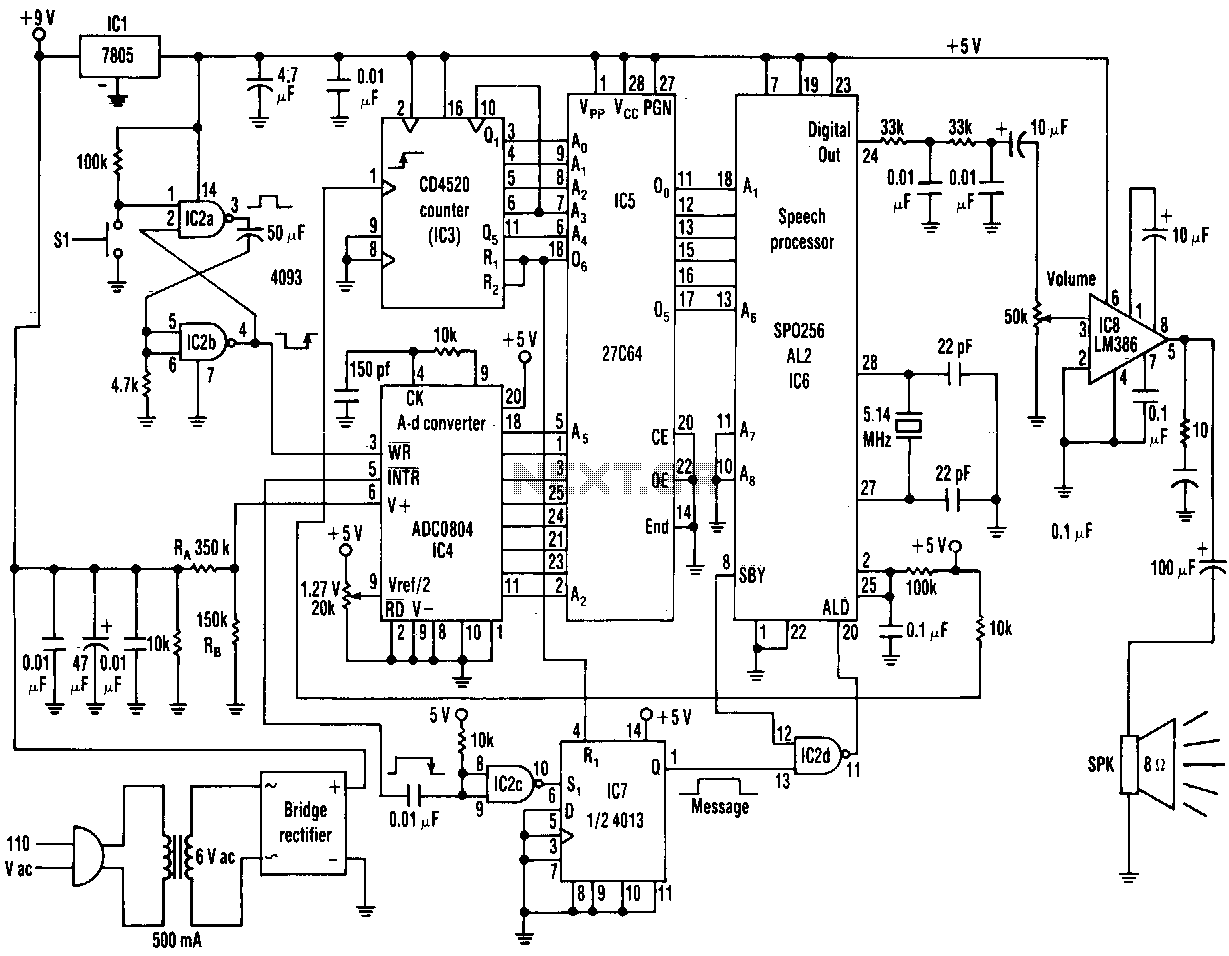
Buck-Boost Voltage Converter

Sometimes it is necessary to power a circuit from a battery where the required supply voltage falls within the discharge curve of the battery. If the battery...
Powering a circuit from a battery involves understanding the discharge characteristics of the battery being used. The discharge curve of a battery represents the relationship between the remaining capacity of the battery and the voltage output over time. When designing a circuit that operates within this range, it is essential to ensure that the circuit can function effectively as the battery discharges.
In applications where the circuit requires a specific voltage, a voltage regulator may be implemented to maintain a consistent output despite variations in the battery voltage during discharge. This is particularly important for sensitive electronic devices that require a stable power supply to operate correctly.
It is also crucial to select a battery type that can provide the necessary current and voltage levels for the desired duration of operation. Common battery types include alkaline, lithium-ion, and nickel-metal hydride, each with distinct characteristics that affect their discharge curves.
Furthermore, monitoring the battery voltage is important to prevent the circuit from operating below the minimum required voltage, which could lead to malfunction or damage. Implementing a battery management system can help in monitoring the state of charge and ensuring safe operation.
In summary, when designing a circuit powered by a battery, careful consideration of the battery's discharge curve, voltage regulation, battery selection, and monitoring is essential to ensure reliable performance throughout the battery's life cycle.Sometimes it is desired to power a circuit from a battery where the required supply voltage lies within the discharge curve of the battery. If the battery.. 🔗 External reference
Powering a circuit from a battery involves understanding the discharge characteristics of the battery being used. The discharge curve of a battery represents the relationship between the remaining capacity of the battery and the voltage output over time. When designing a circuit that operates within this range, it is essential to ensure that the circuit can function effectively as the battery discharges.
In applications where the circuit requires a specific voltage, a voltage regulator may be implemented to maintain a consistent output despite variations in the battery voltage during discharge. This is particularly important for sensitive electronic devices that require a stable power supply to operate correctly.
It is also crucial to select a battery type that can provide the necessary current and voltage levels for the desired duration of operation. Common battery types include alkaline, lithium-ion, and nickel-metal hydride, each with distinct characteristics that affect their discharge curves.
Furthermore, monitoring the battery voltage is important to prevent the circuit from operating below the minimum required voltage, which could lead to malfunction or damage. Implementing a battery management system can help in monitoring the state of charge and ensuring safe operation.
In summary, when designing a circuit powered by a battery, careful consideration of the battery's discharge curve, voltage regulation, battery selection, and monitoring is essential to ensure reliable performance throughout the battery's life cycle.Sometimes it is desired to power a circuit from a battery where the required supply voltage lies within the discharge curve of the battery. If the battery.. 🔗 External reference
